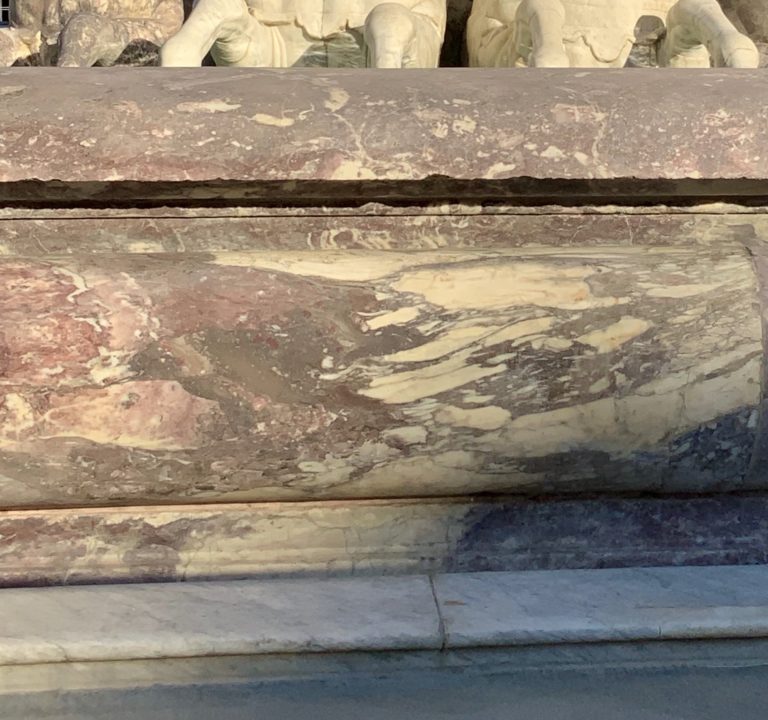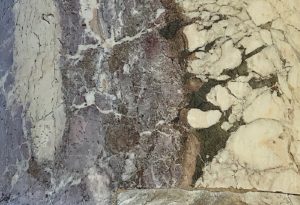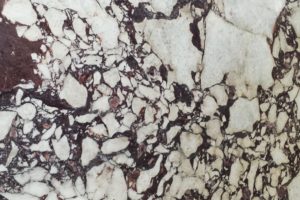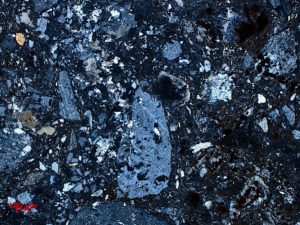
Lithotype
Breccia di Seravezza
Common names
Breccia Medicea, Fior di Pesco, Mischio di Seravezza, Skiros d'Italia.
Rock Classification
Metamorphic rock
This rock comes from the Monte Altissimo Seravezza (Lucca). The oldest quarries, exploited since the Medici time, are in Versilia, in the municipality of Seravezza and Stazzema (Lucca).
The rock comes from the Breccia di Seravezza Formation which is part of the Metamorphic Tuscan Units; it has been attributed to the Retico-Lias Inferiore (?). It is a polygenic breccia that has undergone low-grade metamorphism.
The so-called Medicean Breccia was largely employed by Cosimo I de’ Medici, lord of Firenze, who made this marble the symbol of his power. The Breccia di Seravezza was used in Firenze, mainly for coatings and interior decorations, in the Cattedrale di Santa Maria del Fiore, in Palazzo Pitti and in the Cappelle Medicee. It was also used for the construction of sculptures, like the two pyramids of Piazza S. Maria Novella, the Colonna di San Felice and the Fontana del Nettuno (by Bartolomeo Ammannati) in Piazza della Signoria.
The composition is mainly calcitic with subordinate amount of dolomite; small quantities of pyrite, quartz, hematite and phyllosilicates are also present.
Macroscopic Description
The rock is characterized by marble and dolomite clasts of variable size, from decimetric to centimetric; the marble and dolomitic clasts display white-pinked to light green colour are set in a matrix variable in colour from dark red, to pink, to violet and green. The aspect of this ornamental stone changes depending on the quarry origin; differences can be observed also in the same quarry, depending from the provenience layers placed at different levels; as a consequence, several types, differing in size and colour of the clasts, can be recognised.
Microscopic Description
Marble and dolomitic clasts of variable dimensions generally set in a hematitic and filladic chloritoid matrix.


